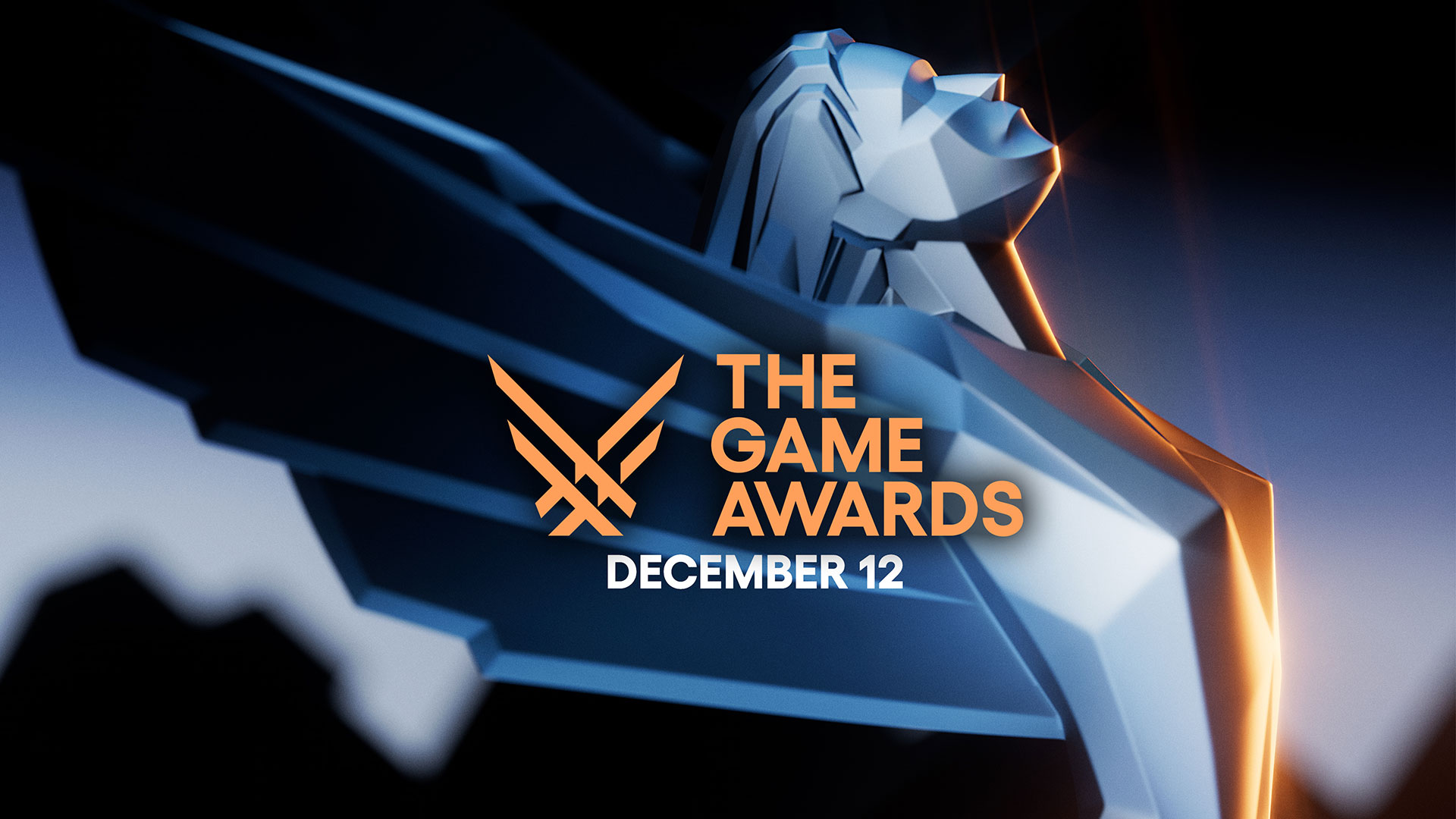The Most Important Moments in Minecraft’s First 15 Years

As Minecraft turns 15 years old, we wanted to take a look back. As one of the most important (and best-selling) games of all time, Minecraft and Mojang’s journey has been incredible to witness – starting as a one-person creation and blossoming into a truly world-changing proposition.
With that in mind, we thought we’d take you back over the biggest moments in Minecraft’s history, year-by-year:
2009: Launching Classic Edition

On May 16, 2009, it all began. Inspired by the likes of Infiniminer and Dungeon Keeper, Markus ‘Notch’ Persson had begun work on what was initially known simply as “Cave Game” a week earlier, before settling on a catchier title: Minecraft: Order of the Stone. Then he was convinced to choose an even catchier title: Minecraft. What came to be known as the Java Classic Edition lacked much of what we’ve come to know from the game – but the building blocks (pun very much intended) were there.
Classic would generate a world, and allow you to dig and build freely, creating your own geometric slices of paradise in its technicolor world. Over the course of the year, Classic would split into Creative and Survival modes, ushering us closer and closer to the Minecraft we’ve known for a decade and a half.
2010: Minecraft Gets Its Crafting System – Plus Minecarts and Multiplayer
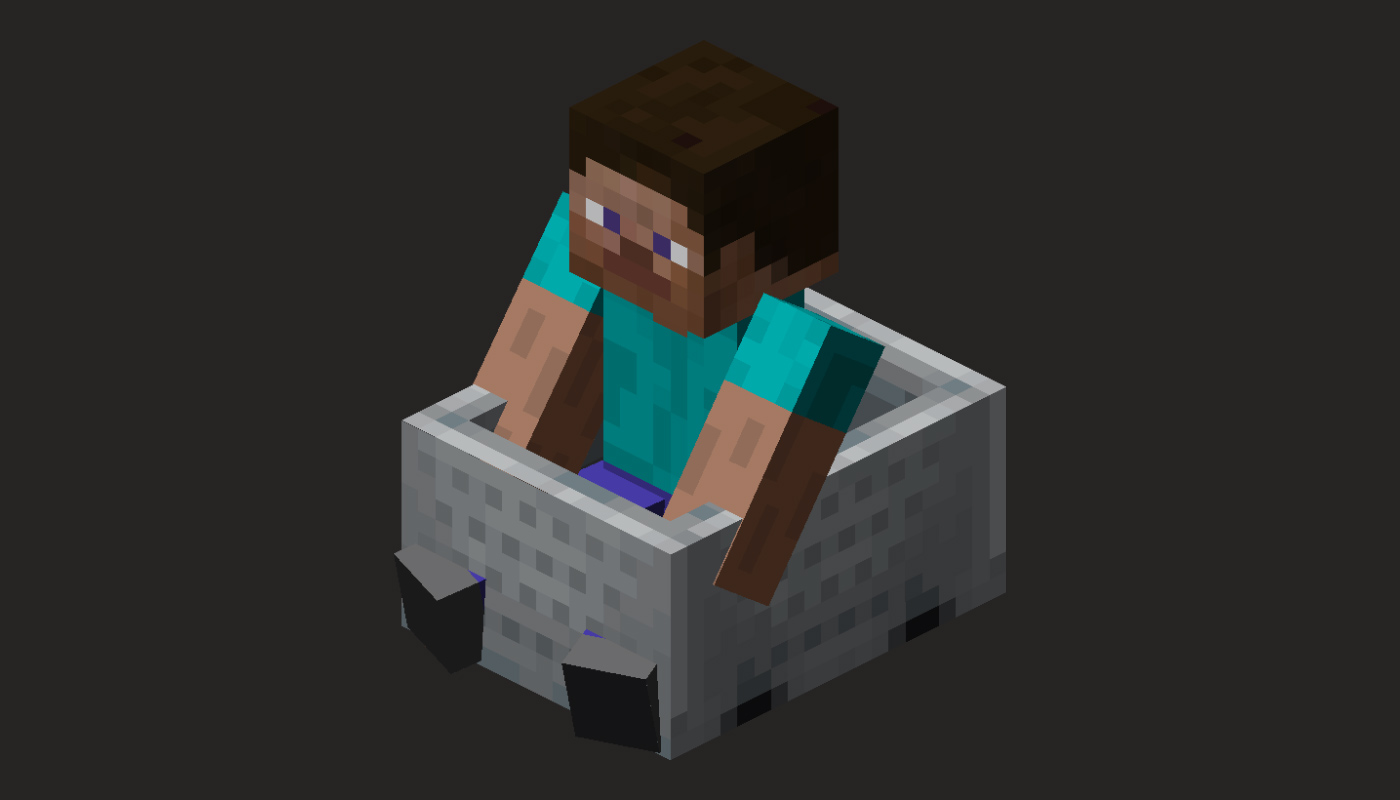
By January of 2010, Minecraft had already amassed over 100,000 players – but some of its most fundamental improvements were still to come – not least making good on that “Craft” part of the title. A crafting system was added late that month, introducing the familiar wood-iron-diamond ‘level’ system for items, and changing, well, everything about how we played the game. Dig-loot-craft-repeat was born.
But that was far from the only major change. By June, minecarts had appeared in the game, changing how players could travel through their worlds and, in August, the first version of multiplayer in Survival mode popped up. So much of Minecraft’s popularity is built on playing with your friends, and this was the first time we could see a glimpse of how huge that would be for the game.
2011: Minecraft 1.0 Released – and the First Port Arrives
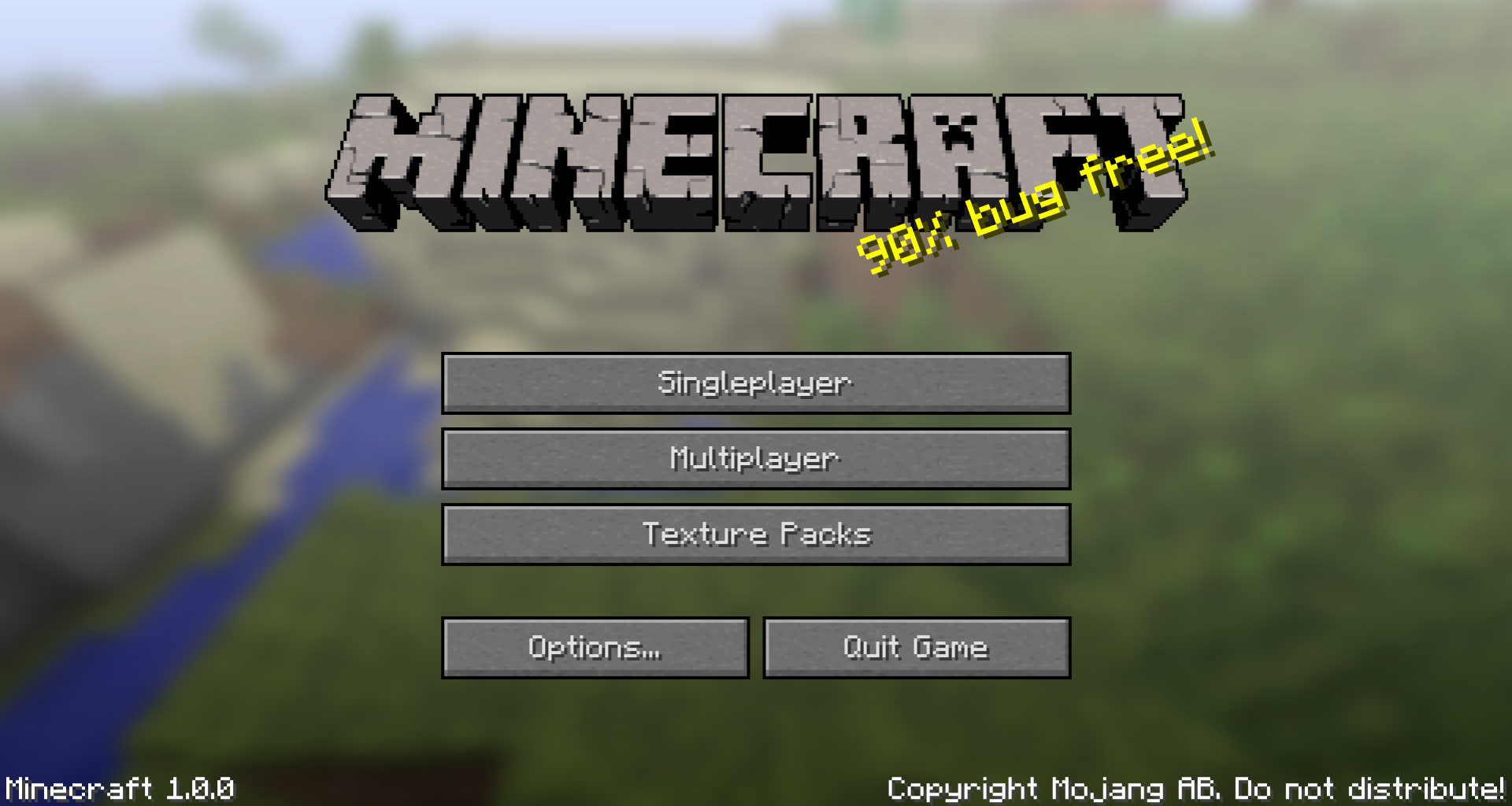
If you want a sense of how fast Minecraft grew, consider this. By January of 2011, the game hit a million players. But July, that had jumped to 10 million. And, to top it all off – all of this came before the game had launched its full 1.0 version. That came on November 18, 2011. What came to be known as Minecraft: Java Edition was released during Minecon 2011, bringing everything millions of players were already loving to an even wider audience – even an “ending” to the game with the Ender Dragon boss fight.
And we can’t ignore that 2011 also saw the game’s first-ever non-PC ports. Minecraft: Pocket Edition launched exclusively for the Xperia Play smartphone in August, followed quickly by an iOS version – from these small beginnings, Minecraft would spread across practically every modern gaming device over the years, becoming the phenomenon it has been in the process.
2012: Minecraft Gets Lego-fied, Comes to Xbox 360, and Gets the Pretty Scary Update

If you wanted to pinpoint the moment where Minecraft became more than just a game, look no further than when Lego officially confirmed that Minecraft – in many ways the brick-building hobby’s digital cousin – would become an official set. Lego Minecraft Micro World allowed you to build four cubic vignettes from Minecraft in real-life, complete with Steve and Creeper mini-figs.
In the world of gaming itself, 2012 was no less important. This year marked the first meeting of Minecraft and Xbox, as Minecraft: Xbox 360 Edition launched in May, offering a console version of the game to millions of new players. This console edition became the basis for Minecraft’s off-PC future – from here, we’d see the game appear on almost every new Xbox, PlayStation and Nintendo console over the years.
We also saw a landmark new update: Pretty Scary brought a host of new mobs to fight off, and also brought one of the most important blocks in the game’s history – the Command Block became the basis for some of the most impressive creations in Minecraft, adding a level of programming that would allow magnificent ideas to spring forth.
2013: The Redstone Update Changes Everything and Horses Ride In
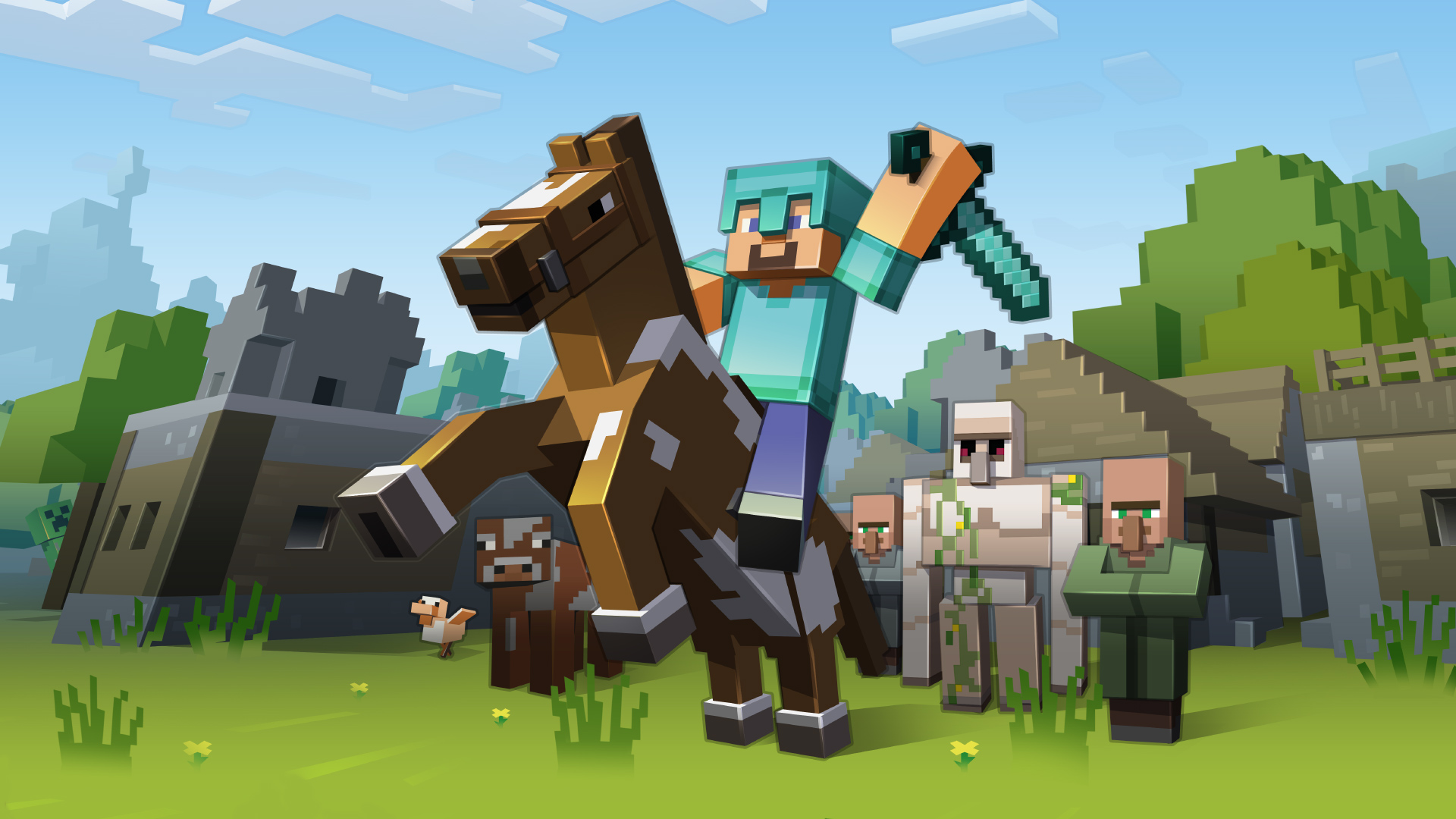
If 2012’s Command Block was the start of something special, 2013’s Redstone Update was when it got really special. Redstone, a block that allows players to power various elements of the game, had already been introduced, but this update opened up a host of new opportunities. Redstone could now be used to power pressure plates, change how rail blocks worked, detect daylight and much, much more. From here, players began to experiment with how far Redstone could take their creations – all the way up to creating working 8-bit computers inside the game.
On the less complicated side of things, we also got the Horse Update, which changed the game in a more adorable way, allowing you to tame and ride the majestic, blocky beasts and travel your world in a new way. Notably, this was a major moment for how Mojang worked with its community – the Horse Update was inspired by a mod, Mo’ Creatures, and shows how the game has been worked on with the fans themselves (many of whom went onto be Mojang developers, too).
2014: Microsoft Acquires Mojang and The Bountiful Update Blooms

I might not even be writing this article if it weren’t for 2014 – when Microsoft saw quite how earth-shaking Minecraft had become and acquired Mojang for $2.5 billion. After two years of working closely together, the two companies came together to shape the future of the game, which has only continued to grow in the decade since.
In the game itself, the Bountiful Update represented an enormous improvement. Built over a full 10 months, Bountiful saw massive changes to the codebase of the game, invisibly improving everything about the experience – but it also brought floating islands, underwater temples, killer rabbits, and much more.
2015: Minecon Breaks Records, and the HoloLens Demo Wows
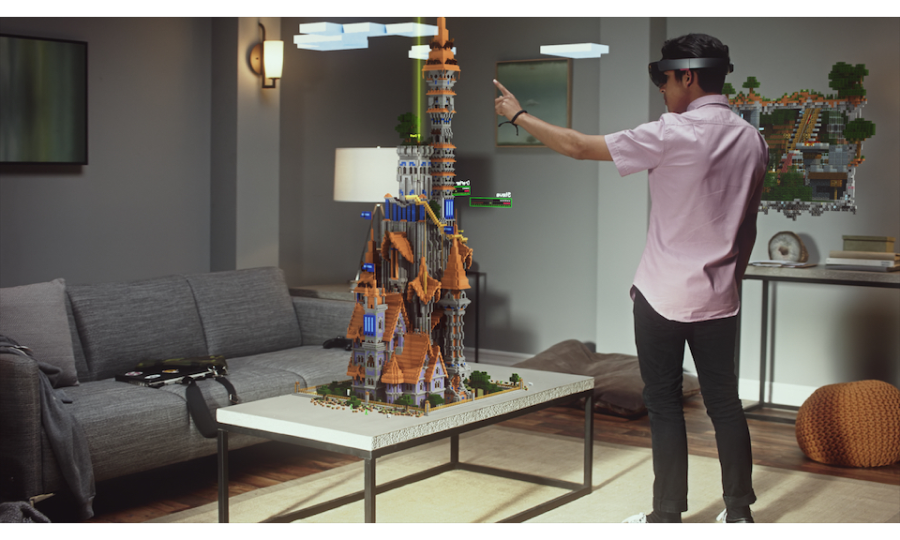
Since humble beginnings in 2010, Minecon had been bringing fans of Minecraft together to celebrate the game – and had subsequently become the home of some of the game’s biggest releases. Come this year, it had become a truly enormous affair – record-breaking, even. Held in London, Minecon 2015 sold 10,000 tickets, earning a Guinness World Record for the largest convention in history for a single game.
2015 also saw Mojang showing just how creative it could get with its ideas – the Minecraft HoloLens demo became one of the most talked-about E3 presentations of recent years. The mixed-reality headset could effectively create parts of a Minecraft world amid the real world around you, offering a perspective on the game no one could have imagined. While it never became a full product, it’s a brilliant evocation of how restlessly creative Mojang is with its game.
2016: Hitting 100 Million Sales, and Minecraft: Education Edition Launches
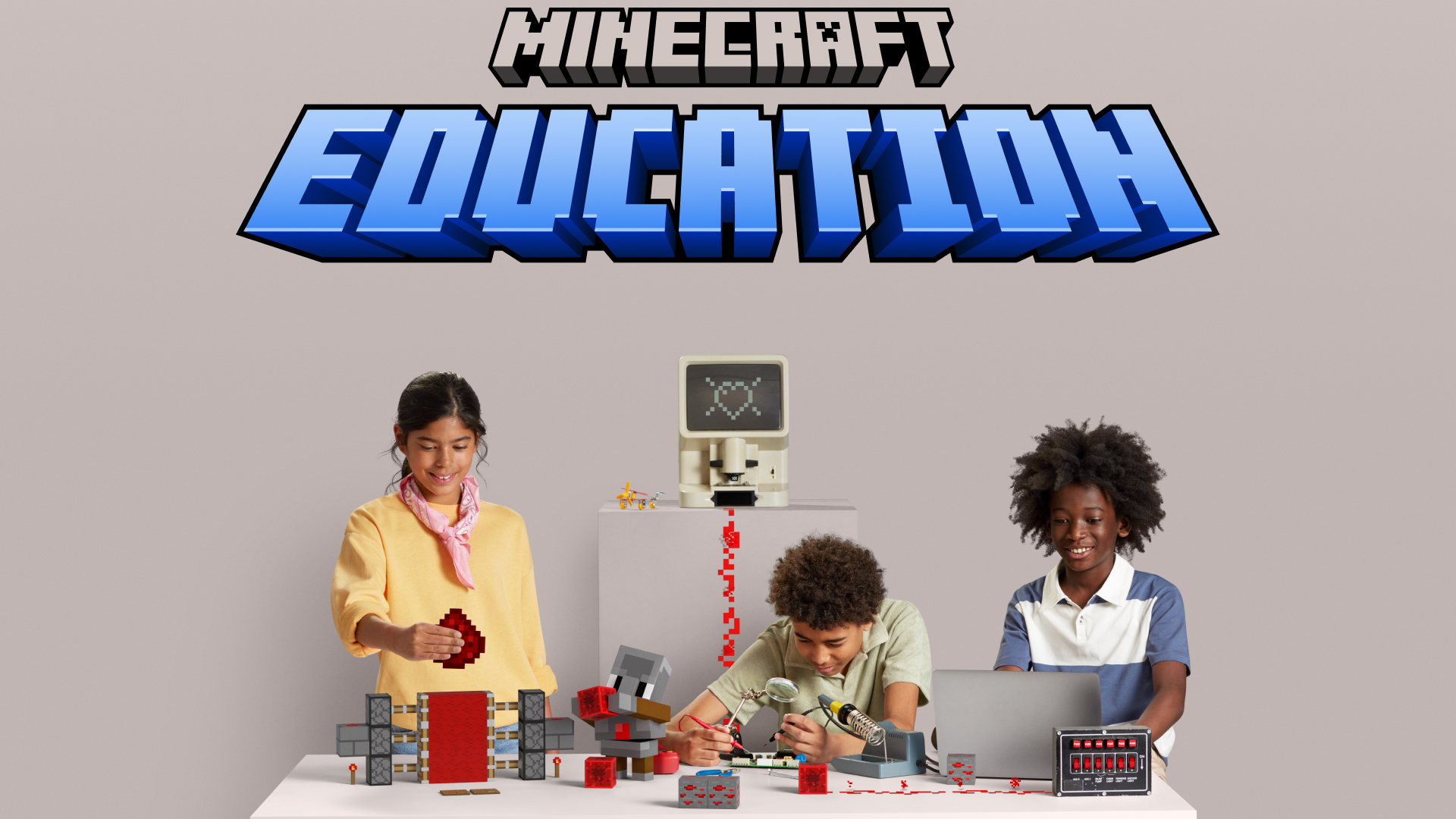
There was no doubt that Minecraft was already a worldwide concern, but 2016 saw its biggest cultural landmark yet – passing 100 million copies sold. In 2016, 53,000 people were buying Minecraft every day – and four copies were even sold in Antarctica. The game has now passed triple that number, but it was here that Minecraft truly set out its stall as one of the most-loved, most important games of all time.
Its influence was so strong, in fact, that 2016 also saw the launch of Minecraft: Education Edition (now simply Minecraft Education). Developed alongside Xbox Game Studios, this version of the game was designed to be used in the classroom, and has allowed kids to build collaboratively, learn from educators inside the game itself, and been updated to include worlds that help learning on Cyber Safety, natural history, and much, much more.
2017: The Better Together Update Unites Players, Minecraft Marketplace Empowers Them
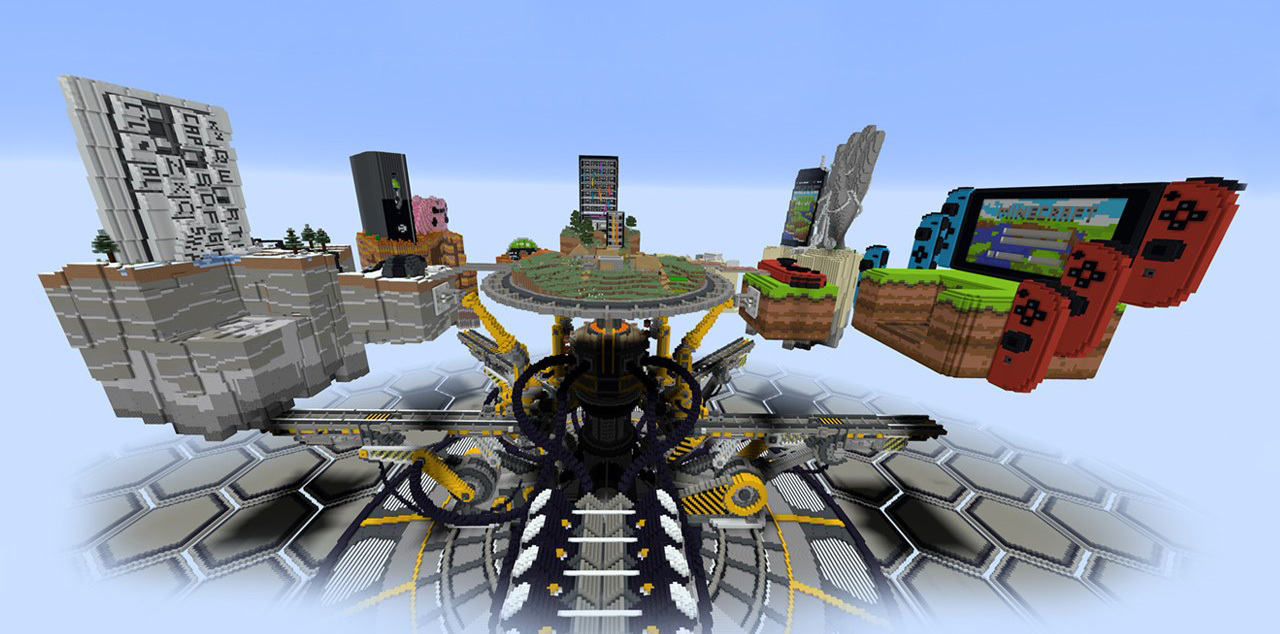
For years, players had been able to get Minecraft on their consoles, but 2017’s Better Together helped make that all the more significant. This was the moment that Mojang began to bring platforms together, allowing anyone with the Bedrock Edition of the game to play together, no matter what device they were playing on. It was a gigantic step, and a true piece of Minecraft magic.
In the same year, Mojang doubled down on its commitment to its community with Minecraft Marketplace – a store that sells curated creator-made skins, texture packs, and maps. Effectively, it offered modders – a huge part of Minecraft’s success over the years – to make money from their creations, and opened the door to literally millions of more people to access their hard work.
2018: Update Aquatic Opens Up New Worlds
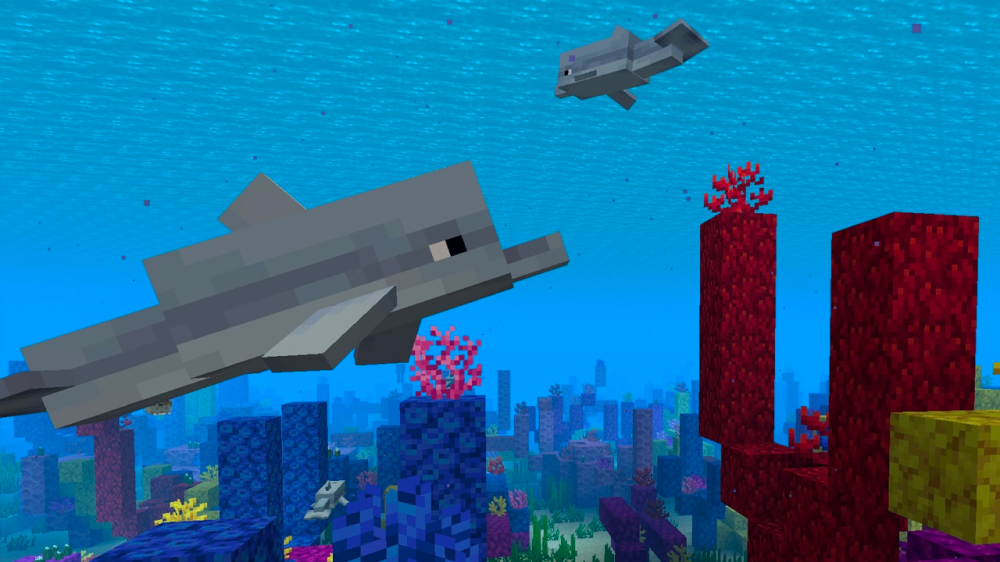
70% of Earth is covered with water, and while that ratio may differ in your Minecraft world, that’s still a lot of space you might otherwise not see. Not so after Update Aquatic – the biggest update to Minecraft’s oceans saw new mobs, blocks, and mysteries added to the game’s underwater realms.
From dolphins and turtles to the only-slightly-horrifying Drowned enemies, there was a lot to play with under the sea, not to mention buried treasure, shipwrecks, and reefs to explore.
2019: 10 Years of Minecraft, and the Village & Pillage Update Storms In

A decade is a very long time in gaming, but it was just the start for Minecraft. The 10-year anniversary of the game went hard, not least with a beautiful map that acted as an interactive museum about the game itself – and a re-release of the Classic Edition of the game to show you just how far the game had come.
Looking forward, we also saw the Village & Pillage update, which populated your world in new ways. Revamped villages (and their villagers) now sprung up across the biomes, offering trading, jobs, and more ways to interact. But to combat all this loveliness, we also saw the addition of Pillagers, a new faction of bandit mobs who’d roam the map looking to spoil your good time. Also, pandas were added, which is only ever a good thing.
2020: Nether Update Takes Us Deeper Underground, and Minecraft Dungeons Arrives
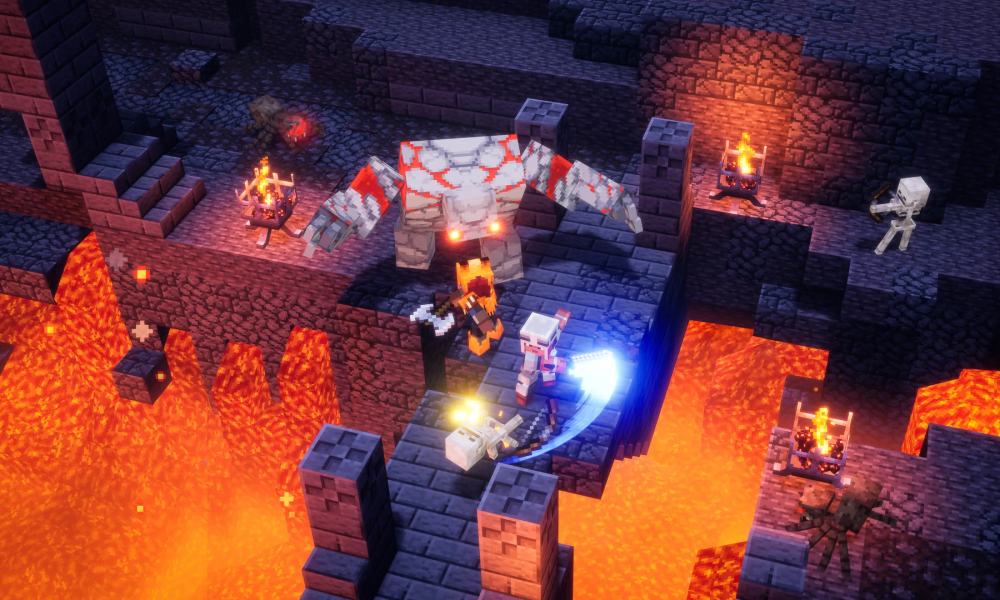
The Nether had long been an object of fascination and terror for Minecraft players, offering a whole other dimension to the game. But the Nether Update changed this world of danger forever, adding new biomes and mobs that turned it from a curious, dangerous place into a true realm to explore in itself.
Meanwhile, Mojang also saw fit to release the biggest Minecraft spin-off yet – Minecraft Dungeons twisted the original game’s basics into an all-new action experience. In partnership with Double Eleven, this game offers a new story-driven approach to the Minecraft universe, transforming familiar items, mobs, and blocks into dungeon crawling essentials.
2021: Minecraft Passes 1 Trillion Views on YouTube, While Caves and Cliffs Emerges
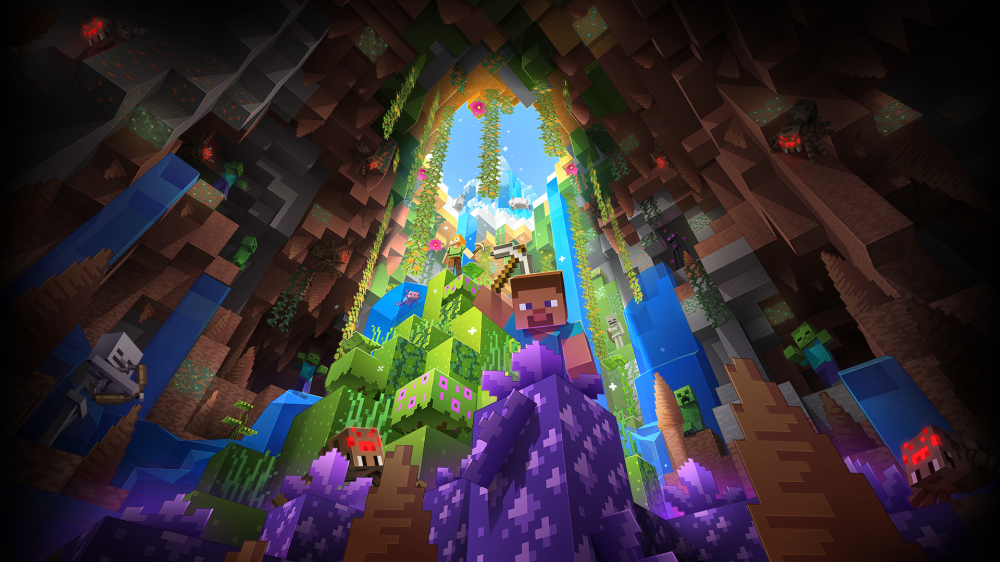
YouTube has been an incredibly important part of Minecraft’s history, with creators across the globe enjoying and sharing the game, and becoming famous in their own right as a result. If you want a sense of quite how intertwined the two became, Minecraft became the first entertainment franchise to break through the 1 trillion views mark on YouTube. As YouTube itself put it: “If each of those one trillion views were just one second long, that would add up to over 30,000 years.” Please, take it from me, don’t try and catch up on all of it.
Inside the game, we saw an update so massive it had to be split into two parts. Caves & Cliffs was the most ambitious update Mojang had ever put together to this point, not only adding the expected new mobs, items, and blocks, but adding entire new biomes and overhauling how Minecraft worlds themselves were generated.
2022: New Default Skins Added and The Wild Update Bursts Forth
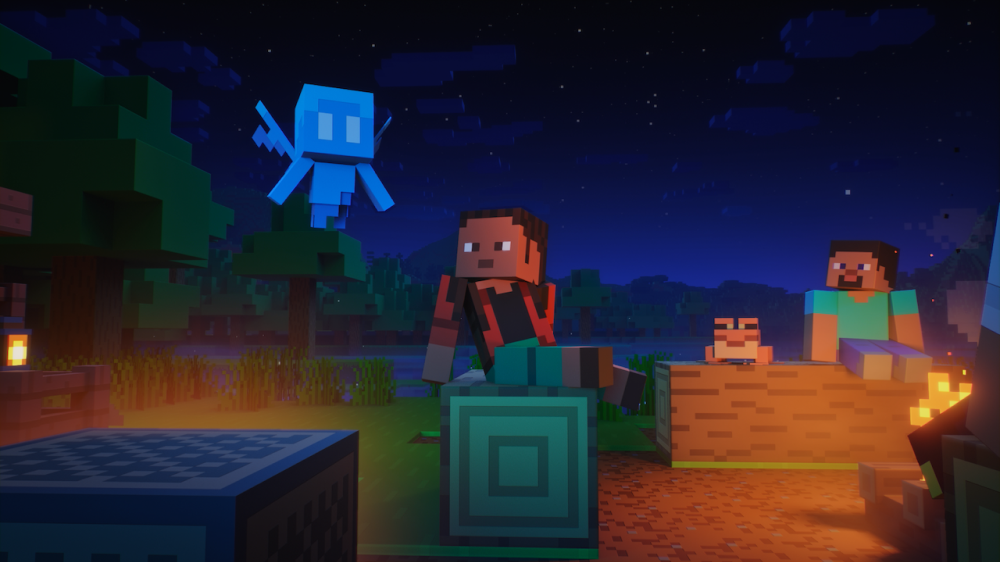
Skin-swapping had been easy for a long time, but good old default skins Steve and Alex were probably a little lonely come 2022. Enter Noor, Sunny, Ari, Zuri, Makena, Kai, and Efe – new default skins that let players express themselves more easily than ever while jumping into their world.
Meanwhile, the Wild Update included even more new biomes on top of 2021’s Caves & Cliffs, including the Deep Dark, a biome only found underground, replete with ancient cities to discover, and the terrifying, blind Warden enemy. Also: frogs!
2023: Minecraft Legends Offers Another New Adventure, and Trails & Tales Launches
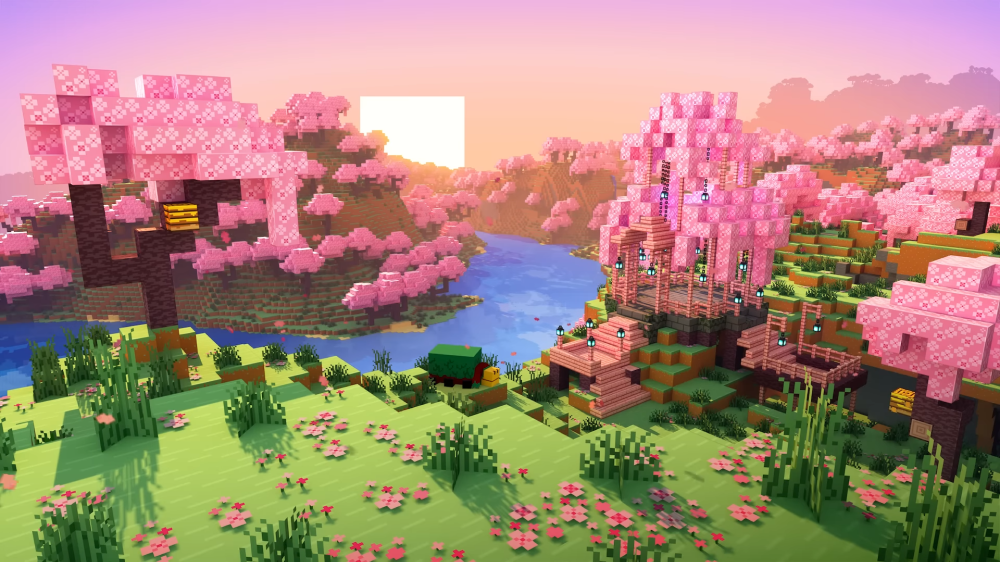
Minecraft Dungeons was only the start. Last year, Minecraft Legends arrived to offer another new look at how Minecraft could be adapted. This action strategy game zoomed way out to offer you a bird’s eye view of the Overworld – and an army of mobs to help you protect it from Piglin hordes.
In Minecraft itself, the Trails & Tales update offered new means of self-expression in your world, not to mention added new stories underground with the addition of archeology in desert biomes. Count yourself lucky if you find the new, rare Cherry Blossom biome – and maybe find your way there on the new camel mob, which has space for you and a friend on its back.
2024: Looking to the Future

And so we reach 2024, as Minecraft turns 15. You might think Mojang might want a bit of a break, but not so – they’ve already released the Armored Paws drop, and announced a massive birthday sale, but there’s so much more still to come. From the upcoming Tricky Trials update to secrets yet to be revealed, this 15th year is, somehow, only the beginning.


Minecraft
Microsoft Studios
$19.99
$9.99
Xbox One X Enhanced
Xbox Game Pass
Explore randomly generated worlds and build amazing things from the simplest of homes to the grandest of castles. Play in creative mode with unlimited resources or mine deep into the world in survival mode, crafting weapons and armor to fend off the dangerous mobs. Scale craggy mountains, unearth elaborate caves and mine large ore veins. Discover lush cave and dripstone cave biomes. Light up your world with candles to show what a savvy spelunker and master mountaineer you are!
FEATURES:
If you can dream it, you can build it. Put your imagination and limitless resources to work with Creative Mode.
Battle mobs, construct shelters and explore the landscape – it’s all in a day’s work when you try to survive and thrive in Survival Mode.
New tools, locations and spaces are yours to explore, thanks to our regular updates.
Cross-platform play for up to eight players across Windows, PlayStation, Nintendo, Xbox and mobile devices.
Discover skin, texture and mash-up packs from the community! Find out more at minecraft.net/marketplace.
REALMS PLUS:
Play with up to 10 friends cross-platform in worlds that exist any time, anywhere – and get access to over 150 pieces of Marketplace content. Try a free 30-day trial in-app and learn more at minecraft.net/realms/bedrock.
You can also play Minecraft with Xbox Game Pass – check it out at xbox.com/gamepass.


